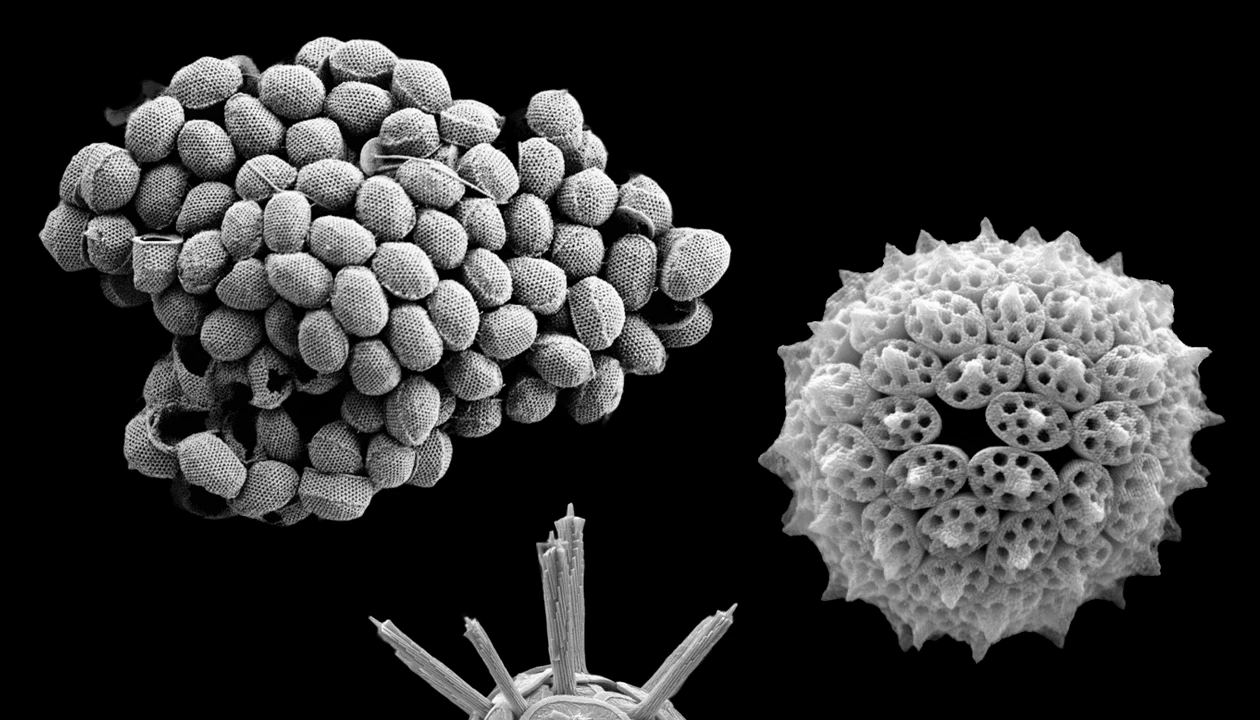The plated, porous, and spiky exteriors of these coccolithophore plankton species may look wildly different, but they all share something in common: each is made from carbon pulled out of the atmosphere. The tiny ocean engineers play a vital role in the global carbon cycle, using carbon dioxide dissolved in salty sea waters to construct microsize architectural marvels of calcium carbonate.
When the plankton die, those carbon-rich shells can fall to the ocean floor, essentially shunting climate-warming carbon safely down to the ocean’s depths. But the biogeochemical impact of these invisible ocean architects is often overlooked or simplified in climate models. Now, in a review paper published in Science, a team of international scientists suggests that ignoring plankton could lead scientists to underestimate how the ocean will respond to climate change (2025, DOI: 10.1126/science.adq8520). To make the most-accurate climate models will require a concerted effort to understand the responses—and briny fates—of many types of plankton.
Credit: Michaël Grelaud (top left, right); Patrizia Ziveri (bottom center)
Do science. Take pictures. Win money. Enter our photo contest.
See more Chemistry in Pictures.
Fionna Samuels Fionna Samuels is a physical sciences reporter at C&EN. Fionna joined the DC-based staff in 2024 after finishing her chemistry PhD at Colorado State University. Now, she writes about chemistry in the atmosphere, the earth, and space. She enjoys exploring DC museums and, when her dog wants to tag along, the wilder spaces of the DMV.
Chemical & Engineering News
ISSN 0009-2347
Copyright ©
2025 American Chemical Society


